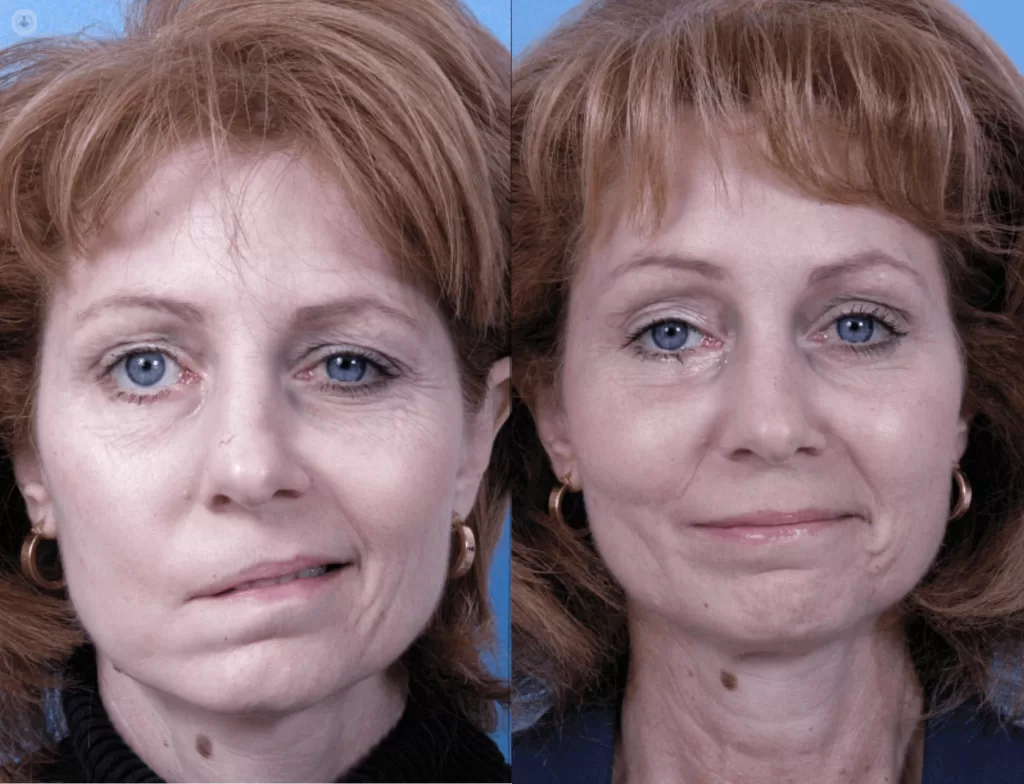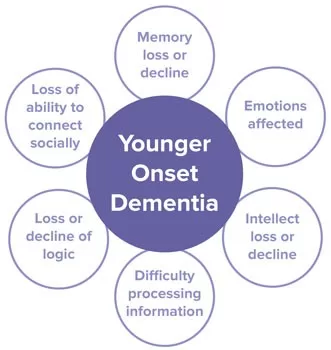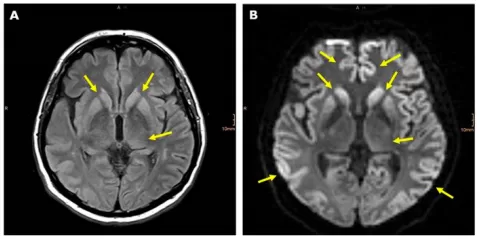Bell’s Palsy is a neurological condition that can strike unexpectedly, leading to sudden weakness or paralysis on one side of the face. Characterized by facial drooping and difficulty in closing one eye, Bell’s Palsy symptoms can vary widely, making it crucial for those affected to seek timely medical intervention. The impact of this condition is not just physical; emotional challenges often accompany the experience, which can be daunting for many. Fortunately, there are effective Bell’s Palsy treatments available, including corticosteroids and physical therapy, which can significantly enhance recovery outcomes. Engaging in Bell’s Palsy exercises can also support rehabilitation, helping individuals regain facial strength and symmetry as they navigate life with this condition.
Often referred to as facial nerve paralysis, Bell’s Palsy can be a perplexing diagnosis for patients and their families. This temporary facial paralysis can arise from various factors, including viral infections that inflame the facial nerve, leading to noticeable changes in facial expressions and functionality. Understanding the nuances of this condition is essential, as it not only affects physical appearance but also carries emotional implications for those living with it. Recovery from facial nerve paralysis typically involves a combination of medical treatments and supportive exercises designed to restore muscle control and facial symmetry. By fostering awareness and education about this condition, we can better support individuals facing the challenges associated with this sudden and often frightening health issue.
Understanding Bell’s Palsy Symptoms
Bell’s Palsy symptoms can be alarming, as they typically emerge suddenly and can significantly affect facial appearance and function. The most common signs include facial drooping, especially on one side of the face, which may lead to difficulty in closing one eye or smiling. Individuals might also experience changes in taste sensations or increased sensitivity to sound in one ear. These symptoms often mimic those of a stroke, which can heighten anxiety. Therefore, it’s crucial to recognize these signs early and seek medical attention for proper diagnosis and treatment.
In addition to physical symptoms, Bell’s Palsy can induce emotional distress and psychological challenges. The temporary facial paralysis can impact self-esteem and social interactions, leading to feelings of isolation or frustration. As such, understanding the full spectrum of symptoms is essential not only for medical reasons but also for emotional support. The unpredictability of when symptoms will arise can create an environment of uncertainty, making it vital for individuals to connect with support groups or mental health professionals during their recovery.
Effective Bell’s Palsy Treatment Options
Treatment for Bell’s Palsy typically begins with a comprehensive evaluation by a healthcare professional who can determine the best course of action. Corticosteroids, like Prednisolone, are often prescribed to reduce nerve inflammation and speed up recovery. This medication is most effective when administered within a few days of symptom onset. Alongside medication, doctors may recommend additional treatments such as physical therapy, which focuses on facial exercises to help restore muscle strength and coordination.
Alternative treatments may also be beneficial in managing symptoms. Some healthcare providers suggest the use of moist heat to relieve pain and discomfort, while others may advocate for antiviral medications if a viral infection is suspected as the underlying cause. The goal of treatment is not only to alleviate the immediate symptoms but also to promote a full recovery, which can often be achieved within a few months with appropriate medical care. Continuous monitoring and follow-up appointments are essential to track progress and adjust treatment plans as necessary.
Bell’s Palsy Recovery: What to Expect
The recovery process from Bell’s Palsy varies from person to person, but most individuals begin to see improvements within a few weeks to a few months. Signs of recovery may include gradual restoration of facial muscle strength, improved ability to close the eye, and more symmetrical facial expressions. It’s important to note that while many people achieve full recovery, some may experience lingering effects, such as mild weakness or facial asymmetry. Regular follow-ups with a healthcare provider can help manage these residual symptoms effectively.
In addition to medical treatment, engaging in prescribed facial exercises can significantly aid in the recovery process. These exercises are designed to help regain muscle control and enhance blood flow to the affected areas. Patients are encouraged to practice these exercises consistently, ideally under the supervision of a physical therapist. This proactive approach not only promotes physical recovery but also helps individuals regain confidence in their facial appearance and functionality.
Living with Bell’s Palsy: Daily Challenges and Support
Living with Bell’s Palsy can present unique challenges that affect daily life. Simple tasks such as eating, drinking, and speaking may become difficult due to facial weakness. Additionally, individuals may need to take extra precautions to protect their eyes, especially if they cannot fully close one eyelid. This can include the use of eye drops or a protective eye patch to prevent dryness and injury. Understanding these daily challenges is key to finding practical solutions that can ease discomfort and improve quality of life.
Support from family, friends, and healthcare professionals plays a crucial role in navigating the complexities of living with Bell’s Palsy. Joining support groups can provide a platform for individuals to share experiences, coping strategies, and resources. Such communities can help reduce feelings of isolation, as they offer a space for individuals to connect with others who have faced similar challenges. Furthermore, staying informed about the condition through reliable resources can empower patients and their loved ones to manage symptoms more effectively.
Exercises for Bell’s Palsy Recovery
Engaging in specific exercises designed for Bell’s Palsy can markedly enhance recovery. These exercises typically focus on strengthening the affected facial muscles and restoring coordination. Health professionals often recommend starting with gentle stretching and warm-up activities to prepare the muscles. Gradually, patients can incorporate exercises that involve smiling, frowning, and raising their eyebrows. Performing these exercises regularly can improve muscle tone and promote faster recovery, making them an integral part of a comprehensive rehabilitation plan.
It’s essential for patients to approach these exercises with patience and consistency, as recovery from Bell’s Palsy can be gradual. Many healthcare providers will tailor an exercise regimen based on the individual’s specific symptoms and recovery progress. Additionally, utilizing mirror feedback during exercises can aid individuals in monitoring their facial movements, which promotes better awareness and control. Ultimately, these rehabilitative exercises not only facilitate physical recovery but also contribute to emotional healing by helping individuals regain confidence in their facial expressions.
Frequently Asked Questions
What are the common Bell’s Palsy symptoms to look out for?
Common symptoms of Bell’s Palsy include sudden facial drooping, difficulty closing one eye, changes in taste, and altered facial expressions. These symptoms usually appear on one side of the face and can develop quickly, often within hours.
What are the most effective Bell’s Palsy treatment options available?
Effective treatment options for Bell’s Palsy primarily include corticosteroids like Prednisolone to reduce inflammation. Additionally, physical therapy may be recommended to help recover muscle strength and function. Early intervention is crucial for a better recovery outcome.
How long does it typically take for Bell’s Palsy recovery?
Most individuals experience significant improvement or complete recovery from Bell’s Palsy within three to six months. However, some may have lingering effects, making it important to follow up with healthcare providers during recovery.
What types of Bell’s Palsy exercises can aid in recovery?
Rehabilitative exercises for Bell’s Palsy may include facial movements that strengthen and restore control of affected muscles. These exercises are generally introduced once initial symptoms have improved and should be guided by a healthcare professional.
What should I know about living with Bell’s Palsy?
Living with Bell’s Palsy can be challenging due to the physical and emotional impacts of facial weakness. It’s important to seek support from healthcare providers and engage in recommended therapies, while also maintaining open communication about symptoms and recovery progress.
| Aspect | Details |
|---|---|
| Definition | Bell’s Palsy is characterized by sudden weakness or paralysis of the facial muscles on one side of the face. |
| Causes | Often caused by inflammation of the facial nerve due to viral infections, particularly the herpes simplex virus. |
| Symptoms | Facial drooping, inability to close one eye, loss of taste, and changes in facial expressions. |
| Treatment Options | Corticosteroids like Prednisolone, physical therapy, and symptom management. |
| Recovery Prognosis | Most individuals recover significantly or fully within 3-6 months. |
| Special Considerations | Bell’s Palsy can occur during pregnancy, requiring prompt medical advice. |
Summary
Bell’s Palsy is a condition that presents unique challenges, particularly due to its sudden onset of facial muscle weakness or paralysis. Understanding the symptoms, potential causes, and treatment options is crucial for effective management. Early detection and intervention can lead to significant recovery, often without lasting effects. Public awareness, especially through recent media coverage, enhances the importance of recognizing symptoms and seeking prompt medical care. By fostering a deeper understanding of Bell’s Palsy, individuals affected by this condition can navigate their recovery journey with greater confidence and support.
The content provided on this blog (e.g., symptom descriptions, health tips, or general advice) is for informational purposes only and is not a substitute for professional medical advice, diagnosis, or treatment. Always seek the guidance of your physician or other qualified healthcare provider with any questions you may have regarding a medical condition. Never disregard professional medical advice or delay seeking it because of something you have read on this website. If you believe you may have a medical emergency, call your doctor or emergency services immediately. Reliance on any information provided by this blog is solely at your own risk.








